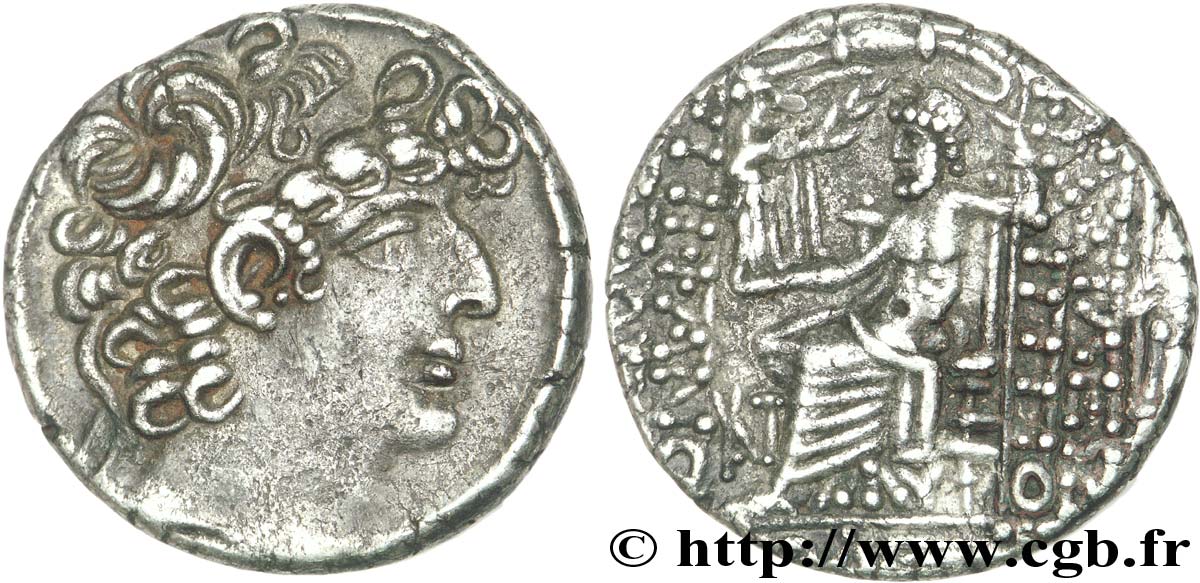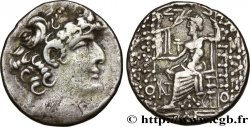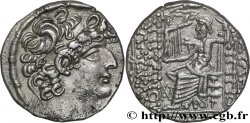bpv_148309 - SYRIA - ROMAN PROVINCE - QUINTUS CAECILIUS Tétradrachme syro-phénicien
Not available.
Item sold on our e-shop (2011)
Price : 395.00 €
Item sold on our e-shop (2011)
Price : 395.00 €
Type : Tétradrachme syro-phénicien
Date: an 4
Mint name / Town : Antioche, Syrie, Séleucie et Piérie
Metal : silver
Diameter : 26,5 mm
Orientation dies : 12 h.
Weight : 15,03 g.
Coments on the condition:
Très beau portrait avec une jolie patine de médaillier. Frappé sur un flan un peu court pour le revers. Flan légèrement taché sur l’arrière du trône au revers
Catalogue references :
Prieur 5 - RPC.4128
Obverse
Obverse legend : ANÉPIGRAPHE.
Obverse description : Tête diadémée de Philippe Philadelphe à droite, entouré de la stemma.
Reverse
Reverse description : Zeus nicéphore assis à gauche sur un trône avec dossier, tenant une Niké de la main droite et un sceptre long de la main gauche ; monogramme dans le champ à gauche ; date à l’exergue.
Reverse legend : BASILEWS/ FILIPPOU/ EPIFANOUS/ FILADELFOU, (Basilews Filippou Epifanous Filadelfou).
Reverse translation : (Roi Philippe Epiphane Philadelphe/ monogramme d’Antioche).
Commentary
Semble de même coin de droit que l’exemplaire reproduit dans l’ouvrage de K. et M. Prieur (p. 4 n° 5). Dans la base TSP, Michel Prieur a répertorié 40 tétradrachmes. Cet exemplaire est référencé sous le numéro (TSP. 0005_037). Sur dix exemplaires recensés par les auteurs du Roman Provincial Coinage, six au moins se trouvent dans des musées : Paris, Londres, New York, Munich (2 ex.). Deux exemplaires proviennent de trésors ou de fouilles : Sarnakounk (IGCH 1746) découvert en 1945 qui contenait 373 pièces d’argent dont 210 deniers et 58 tétradrachmes dont un exemplaire de l’an 4 ; le second tétradrachme, des fouilles de Dura V (E. T Newell, NNM 58, 1933) avec vingt tétradrachmes dont quinze posthumes et un de l’an 4.








 Report a mistake
Report a mistake Print the page
Print the page Share my selection
Share my selection Ask a question
Ask a question Consign / sell
Consign / sell
 Full data
Full data

